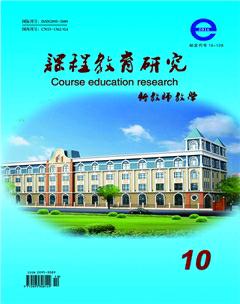English Language Teaching in Yunann Province: Opportunities & Challenges
Fengqin+Liu
Abstract:
With the development of the relations between China and ASEAN, English language learning and teaching is playing a more and more important role -- especially, the importance of location of Yunnan province as a “major bridgehead" for international relations with Southeast Asia. Because of the policy of making English an official language in ASEAN, ‘Opportunities and Challenges shall be discussed in this article. Also, some suggestions to enhance teacher training would be proposed.
Keywords :Southwest of China, Yunnan Province, English Teaching,
中圖分类号:H319
As we are well aware, the ‘ASEAN Economic Community (AEC) consists of people speaking many different languages. Without a common language, it is very difficult for them to communicate with each other as part and parcel of AEC. That is why the AEC has a policy of using English as a Lingua Franca of the region by 2015.
As Yunnan province is one of the most important areas in Greater Mekong Subregion (GMS), a development project launched by the Asian Development Bank in 1992 brought together the six states of the Mekong River basin, namely Cambodia, Laos, Myanmar, Thailand, Vietnam, and the Yunnan Province of China. Increasingly, modernization and industrialization are emerging from a process of transition and transformation. In addition, in 2009, The Bridgehead Project (BP) was launched by Yunnan province in response to President Hu Jintao's instruction of building Yunnan into a “major bridgehead" in China's communication and co-operation with Southeast Asia, South Asia and the Mekong valley area. Thus, the opportunities of the Southwest of China are most greatly opening, which is widely supported by the BP policy.
The role of English as a Lingua Franca of the AEC has been emphasized by McArthur (2003). Furthermore, the ASEAN Charter Article 34, has this to say: “The working language of ASEAN shall be English” (29). The working language of ASEAN is English. So, if the association was to conduct meetings, everyone should speak English. Even every report, records, statements and all those which concerned interactions should be done in English. Teaching English as a foreign language has been developed since latter half of the 19th century in China (Keqiang 1986). To the best of my knowledge, ELT in Southwest of China is ‘TEFL, because we teach English as a required subject at school.
However, as Yunan province is located in the minority region, most people speak Standard Chinese (Putonghua, commonly called 'Mandarin'), which is used in the media, by the government, and as the language of instruction in education. But Yunnan's ethnic diversity is reflected in its linguistic diversity. Languages spoken in Yunnan include Tibeto-Burman languages such as Bai, Yi, Tibetan, Hani, Jingpo, Lisu, Lahu, Naxi; Tai languages like Zhuang, Bouyei, Dong, Shui, or northern lao dialect; as well as Hmong-Mien languages. The language diversity from the different ethnic groups in Yunnan is a great challenge to teach English. Perhaps the students may not be ready to start learning a new language that is entirely different from their ethnic language. Moreover, the teacher who teaches English may not be well qualified to teach the minority children. This is the challenging for language educators and policy makers in southwest of China. Thus, teaching English language in the minority region that could be Challenge.
Minority people have difficulties in pronunciation of some sounds of English, and they can not communicate meaningfully with native speakers. The teaching of English phonetics faces the problems of low starting point with a poor grounding, big regional differences, falling behind in teaching quality and low phonetics quality of students. Therefore, Yan (2008) suggested that it is important to raise awareness of both students and teachers in order to pronounce correctly, so that they will pay attention to correct their pronunciation.
Since both opportunities and challenges are two sides of the same coins, they are bound to affect ELT and teacher education in a major way. Teachers of English need to be trained and to understand the implications of the teaching English in an ethnic diversity area. It is proposed here that a stopgap measure in teacher education, i.e. in-service teacher training. The in-service teacher training program should be formulated right now in order to improve English language teachers` quality under the opportunities and challenges as the fast stepping towards making English as a linga franc in lingua franca SEAN today.
REFERENCES
Keqiang, W. (1986). Teaching English as a foreign language in China. TESL Canada Journal revue Tesl du canad, special issue 1, 153.
McArthur,T. (2003). The English languages. Jouranl of English Today, 19, 19-22.
Yan. N. (2008). Present and Future Prospect of Teaching English Phonetics in Ethnic Minority Regions of Southwest China—Taking Yunnan Province as an Example. Journal of Research on Education for Ethnic Minorities,13 (5), 57-60

